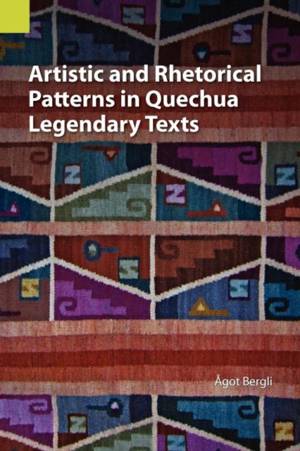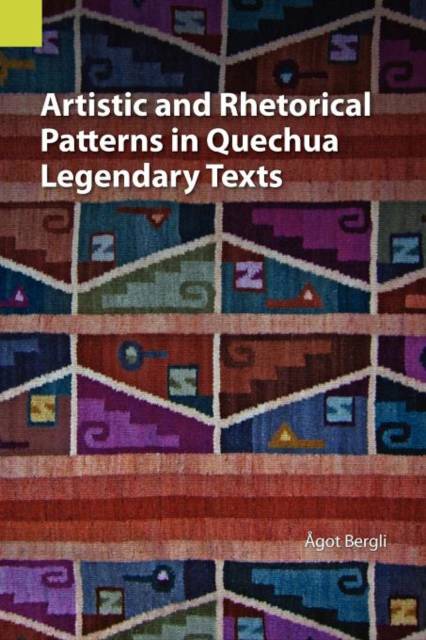
- Afhalen na 1 uur in een winkel met voorraad
- Gratis thuislevering in België vanaf € 30
- Ruim aanbod met 7 miljoen producten
- Afhalen na 1 uur in een winkel met voorraad
- Gratis thuislevering in België vanaf € 30
- Ruim aanbod met 7 miljoen producten
Omschrijving
This book shows the role of specific linguistic structures in the creation of formulaic, artistic patterns in Quechua legendary narratives and explores how the patterns function in relation to concepts such as main event line and other rhetorical structures. The analysis of the texts into artistic patterns is mainly based on Dell Hymes's criteria; thus "pattern numbers," initial connectives and evidential markers play an important role in the pattern formations. The Quechua texts also show that the switch-reference markers and/or the rotation of subject in general is crucial to the structuring of the texts. The analysis moreover shows how the different patterns discovered are closely tied to rhetorical/cognitive structures, as they are perceived and lined out by various linguists, especially those of Robert Longacre and Wallace L. Chafe. The analysis of the texts prompts various questions in regards to the functions of the linguistic structures mentioned. Some of these get specific attention in the final chapter which also includes a discussion that seeks to find an explanation of the textual patterns through looking at universal artistic patterns as outlined by other scholars, as well as looking to some Quechua cultural patterns. Ågot Bergli received the Dr. art. (Ph.D.) in linguistics in 2002 from Norges Teknisk-Naturvitenskapelige Universitet (NTNU), Trondheim.She has worked with SIL International since 1979, primarily as an editor of works on Quechua and discourse studies.
Specificaties
Betrokkenen
- Auteur(s):
- Uitgeverij:
Inhoud
- Aantal bladzijden:
- 324
- Taal:
- Engels
- Reeks:
Eigenschappen
- Productcode (EAN):
- 9781556712449
- Verschijningsdatum:
- 20/01/2010
- Uitvoering:
- Paperback
- Formaat:
- Trade paperback (VS)
- Afmetingen:
- 152 mm x 229 mm
- Gewicht:
- 435 g

Alleen bij Standaard Boekhandel
+ 124 punten op je klantenkaart van Standaard Boekhandel
Beoordelingen
We publiceren alleen reviews die voldoen aan de voorwaarden voor reviews. Bekijk onze voorwaarden voor reviews.










